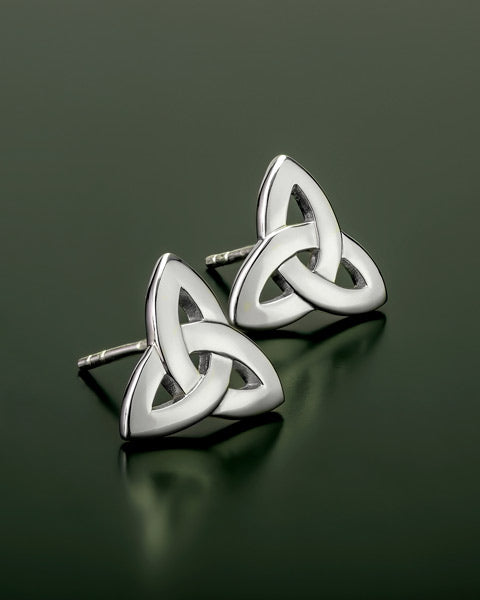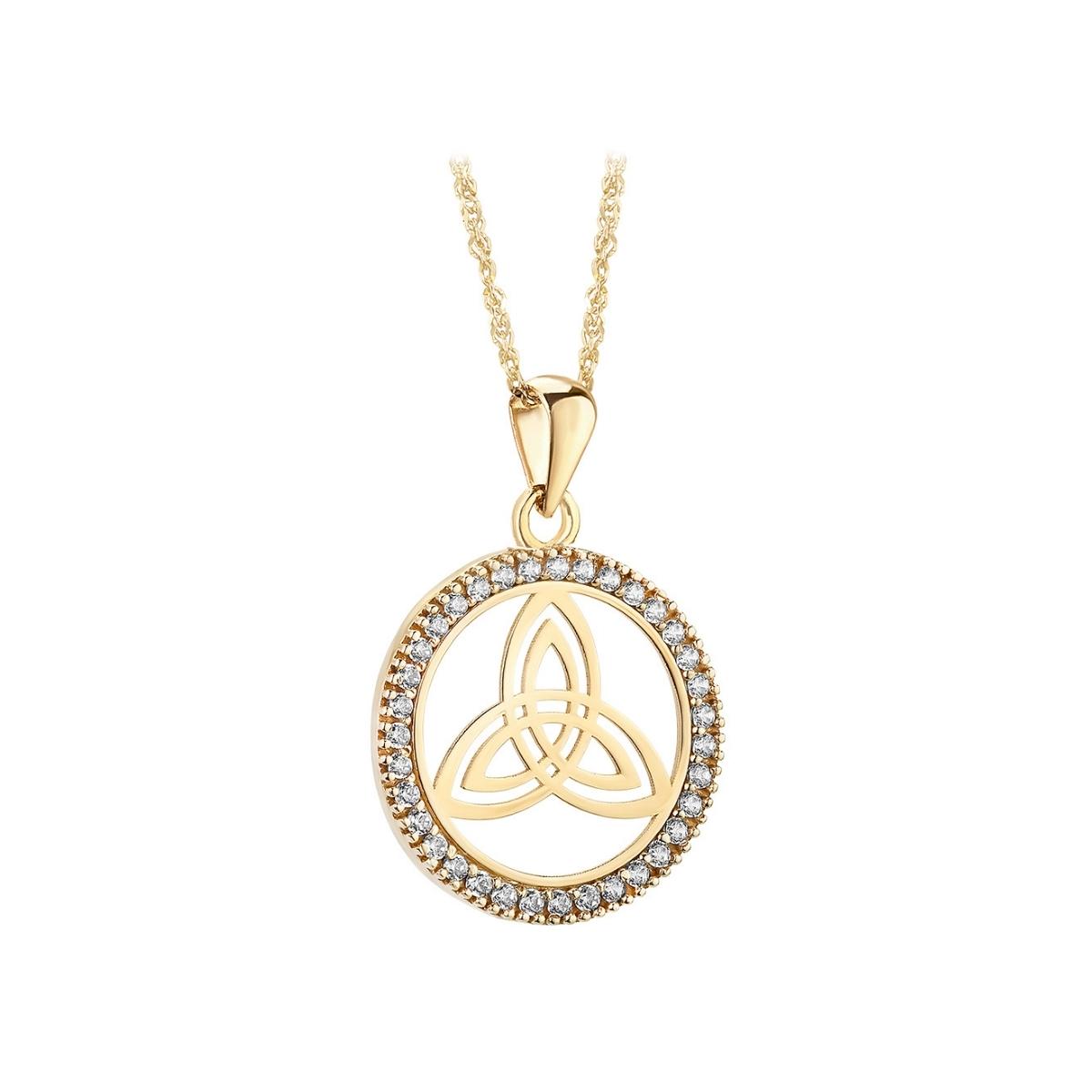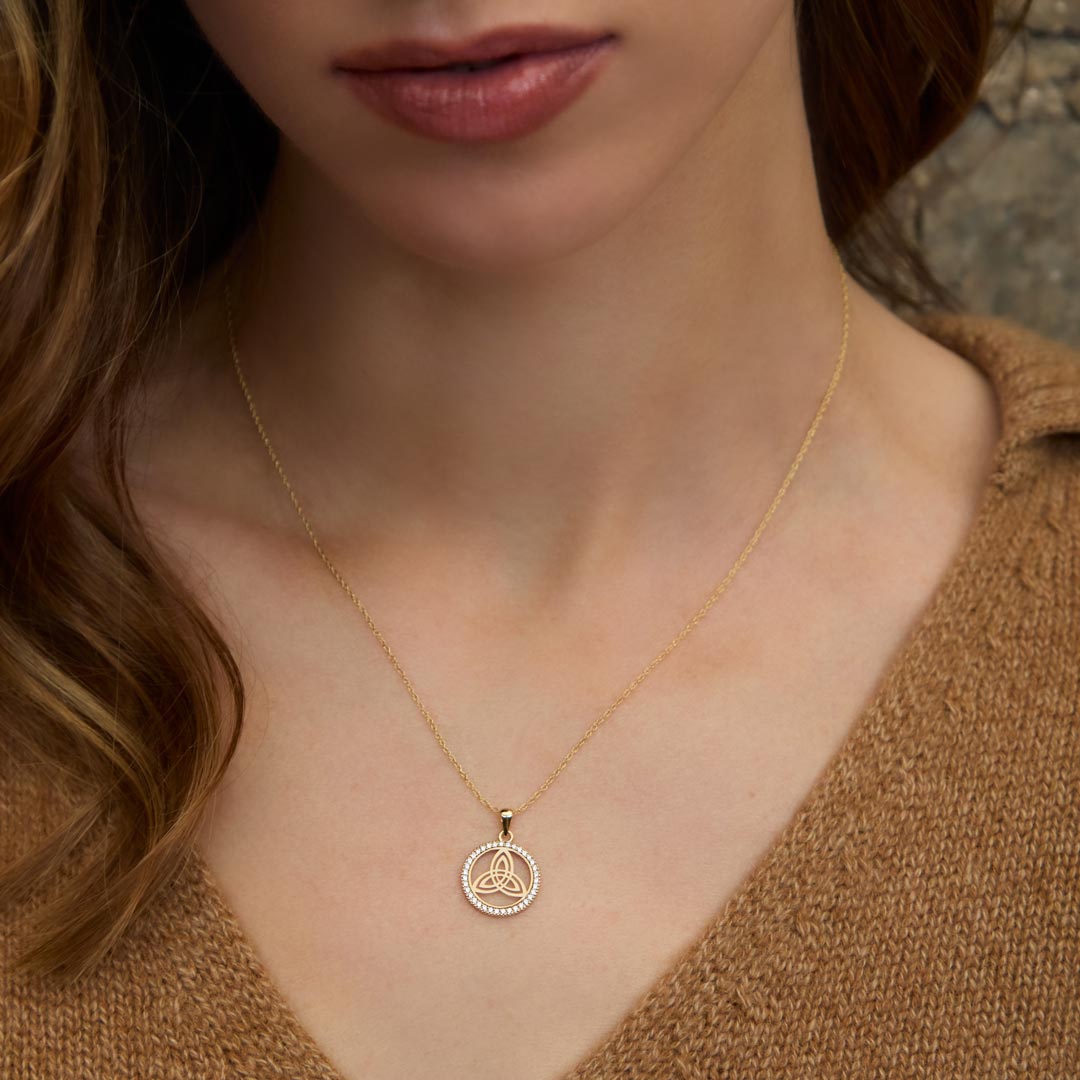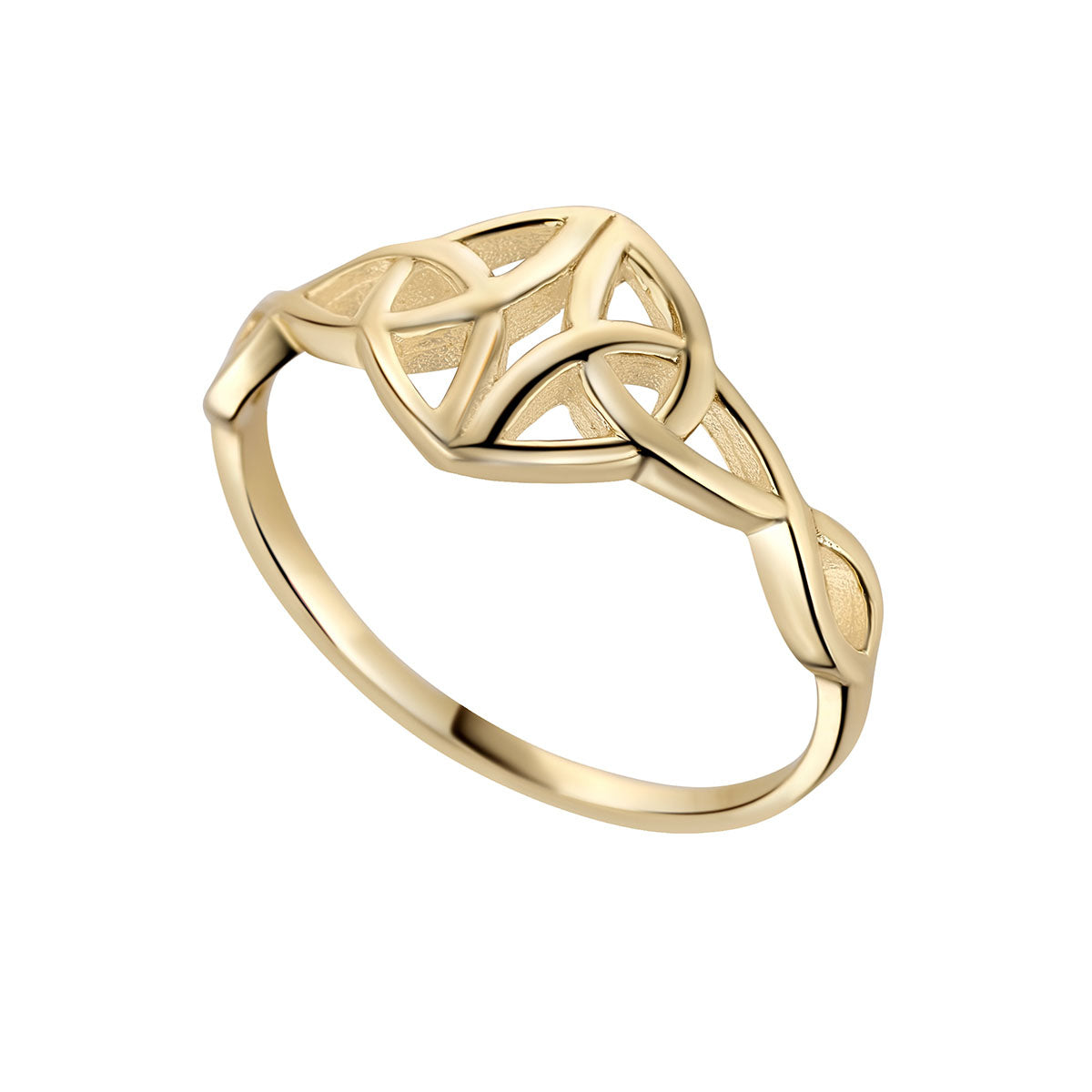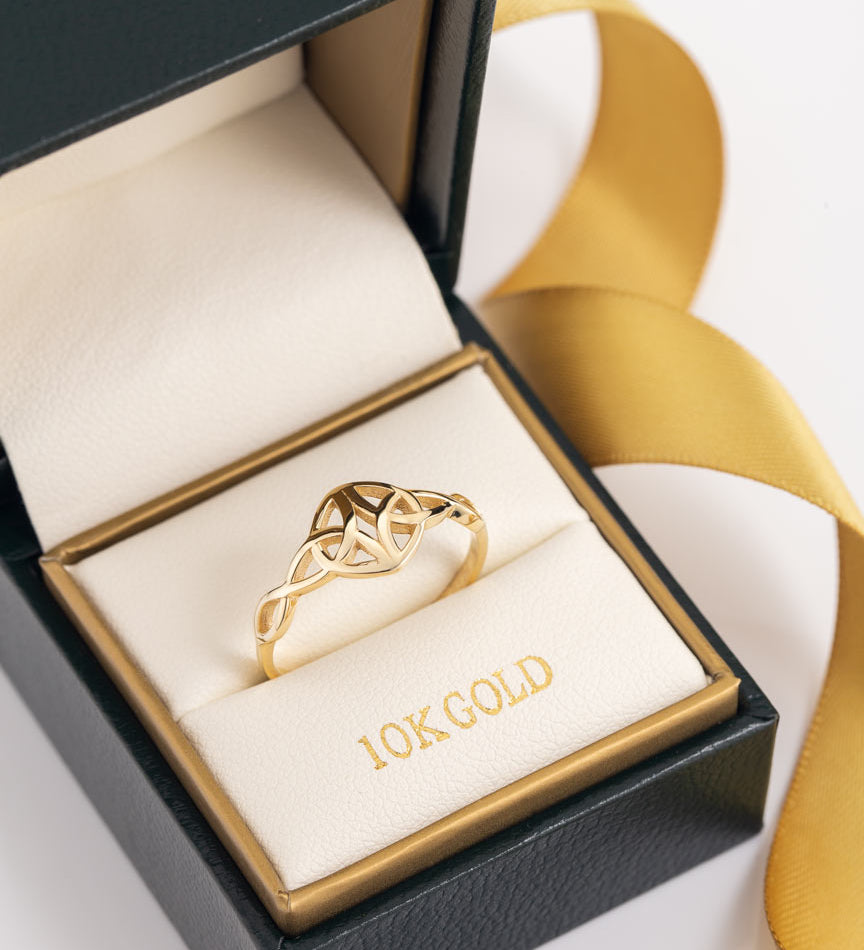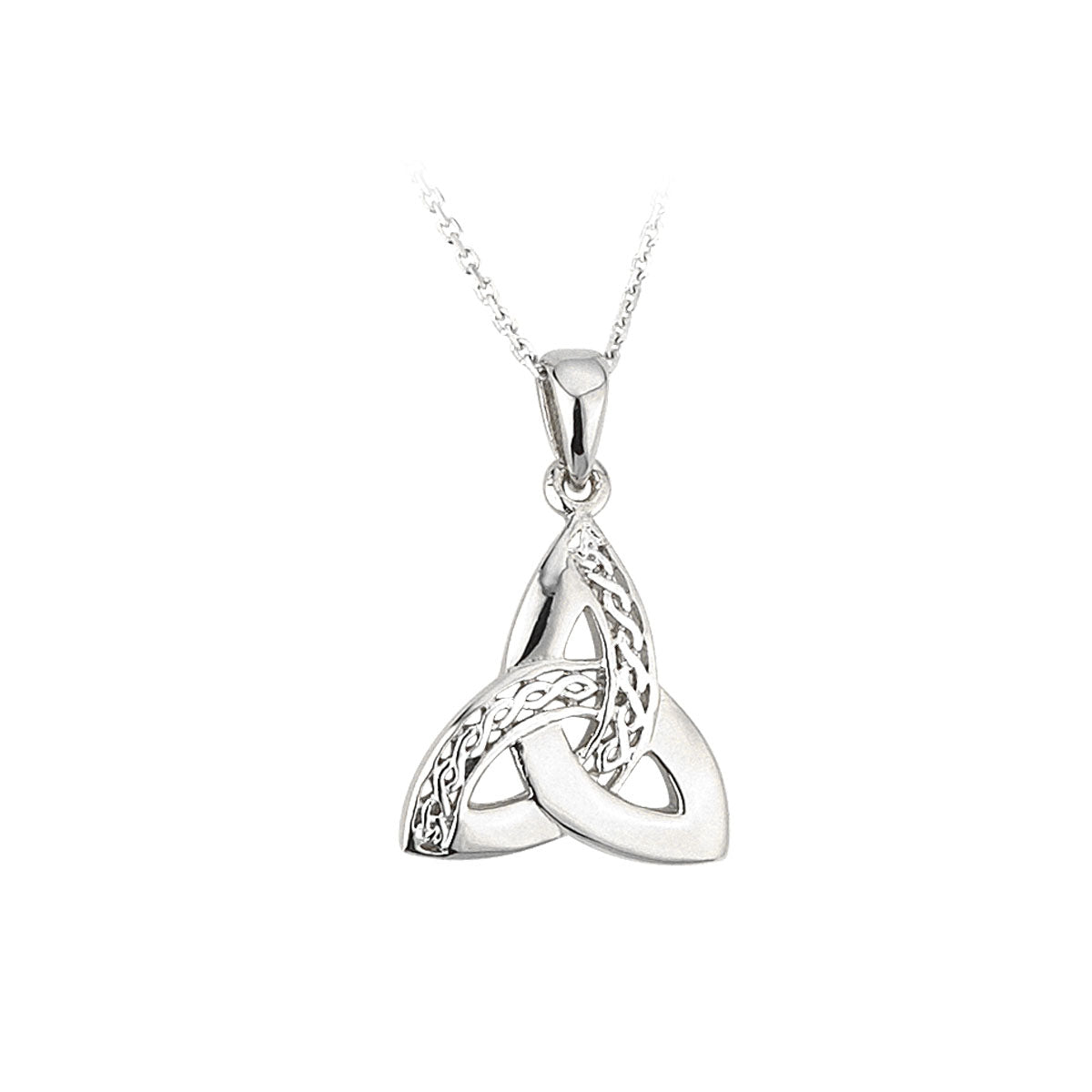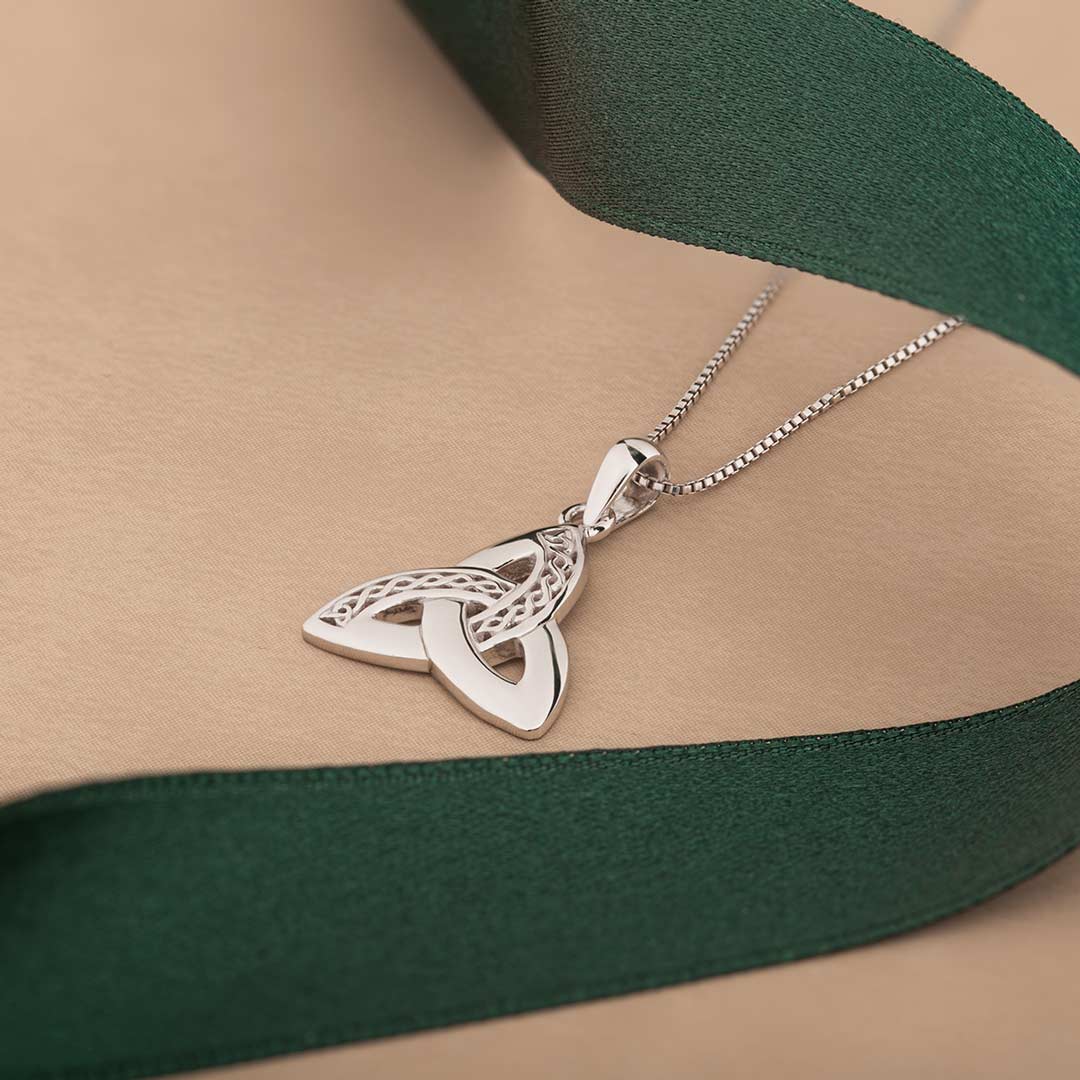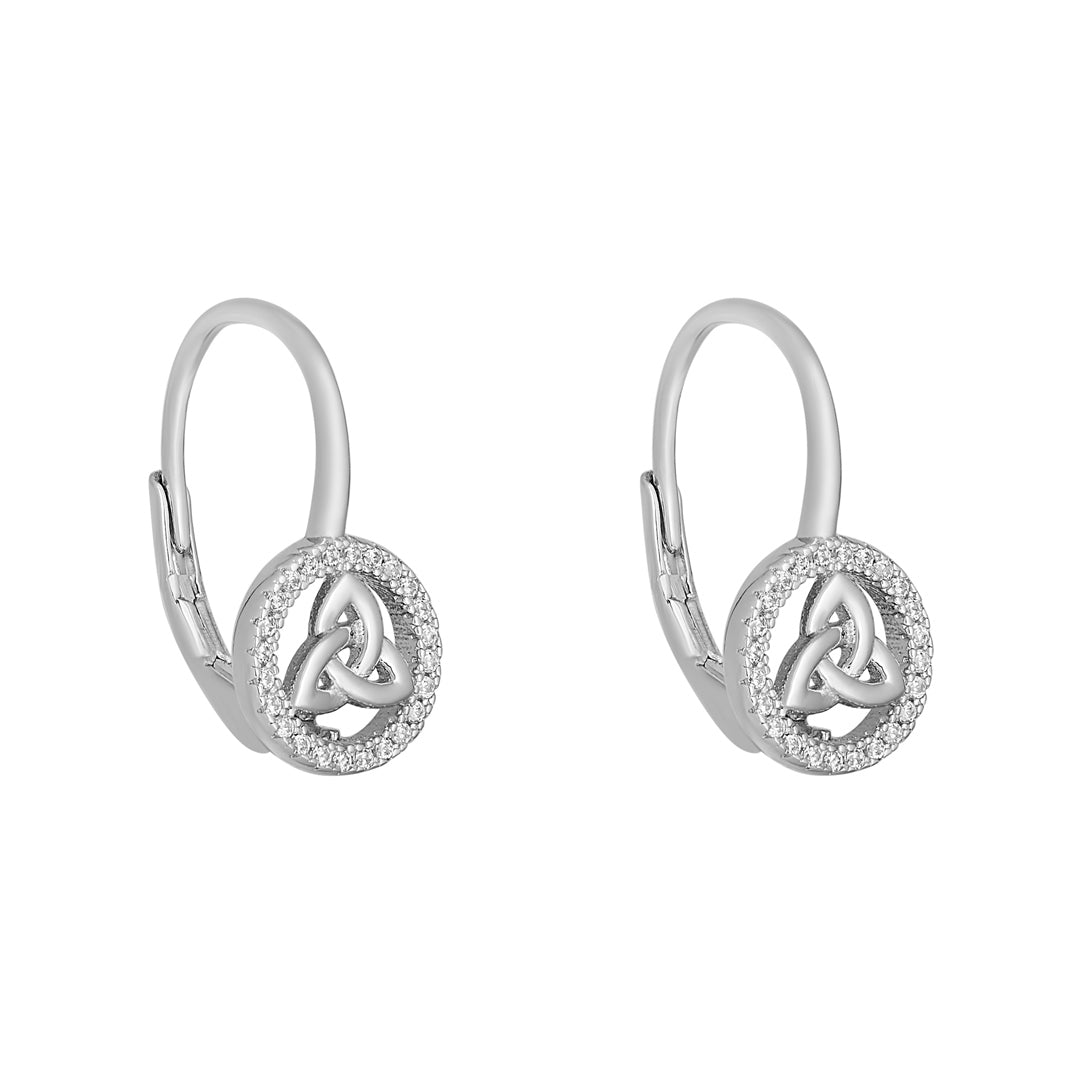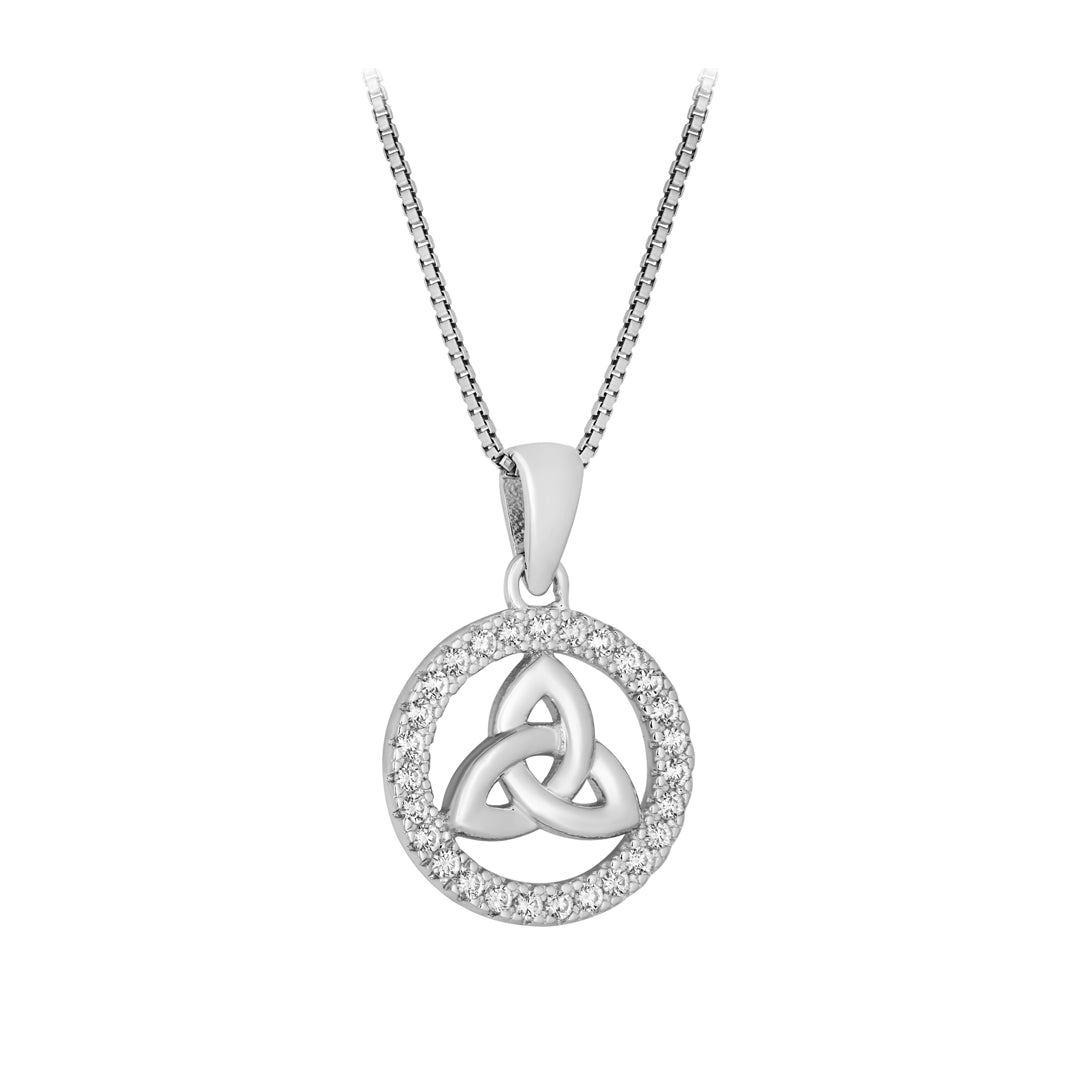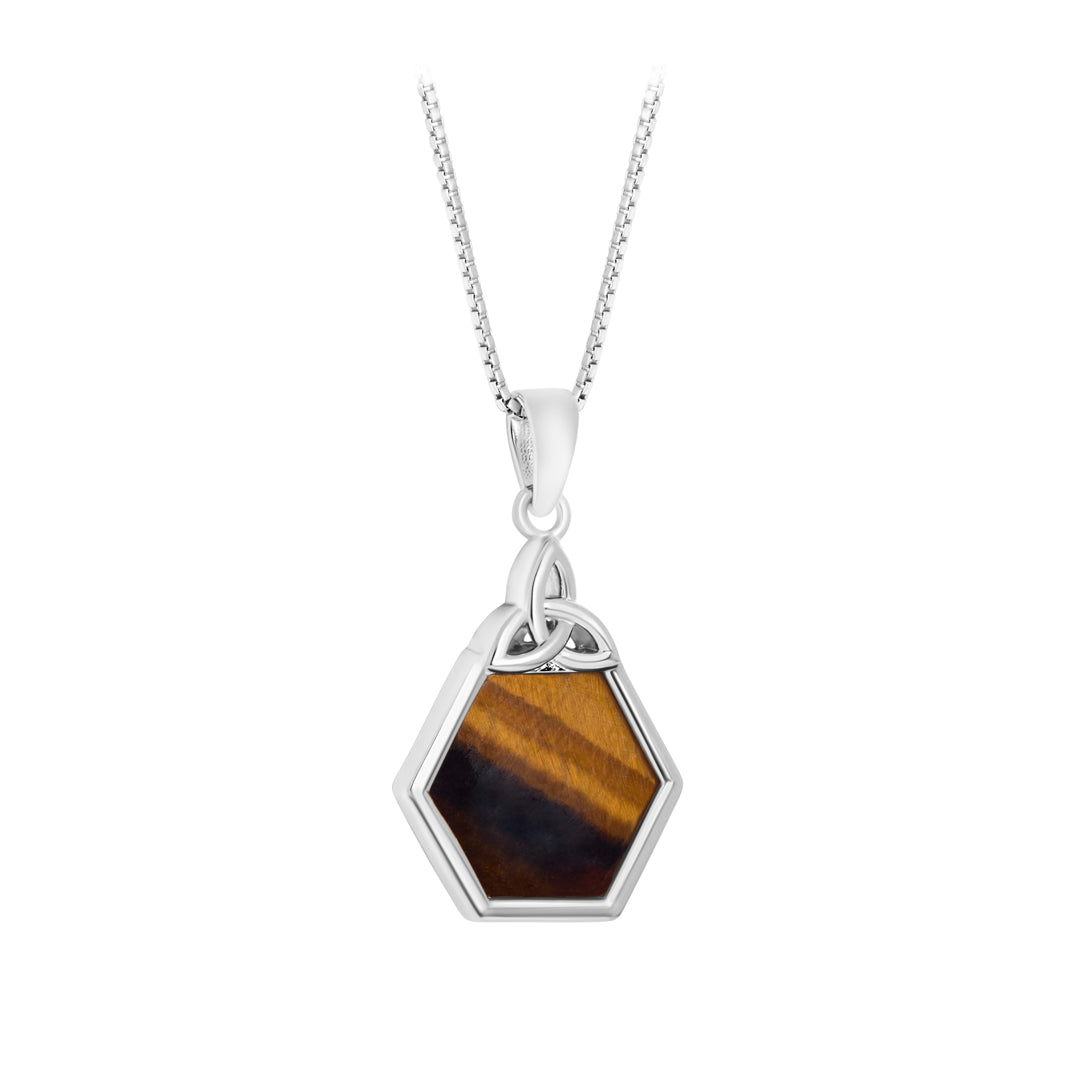
The Trinity Knot, also known as the Triquetra, is one of the most recognisable symbols of Celtic culture. An endless, intertwining Celtic knot work symbol with three corners, it is possibly of pagan origin, with its original meaning lost in time. We do know that the number three held deep significance for the Celts, the three corners possibly representing the three intertwined domains of earth, sea, and sky, or the solar and lunar phases.
In later centuries, the Trinity Knot was adapted to Christianity, with the three points representing the Holy Trinity of Father, Son and Holy Spirit. The golden age of Irish art and metalwork coincided with the period of early Irish Christianity, enlightenment, learning, and faith, which saw Ireland celebrated as the 'isle of saints and scholars'. Irish monks worked from dawn till dusk, with infinite care and patience, producing handmade, lavishly illustrated versions of the gospels, stopping only to eat and pray. It reflects the convergence of mind, body and spirit - a message as powerful and mystical today as it was in those ancient times.
Today, the Book of Kells remains a testimony to the artistry which produced this lasting legacy. The twists and turns of the Trinity Knot symbolise the timeless nature of the human spirit. With no beginning and no end, this intricate decoration is a sign of eternal life and never-ending love.

